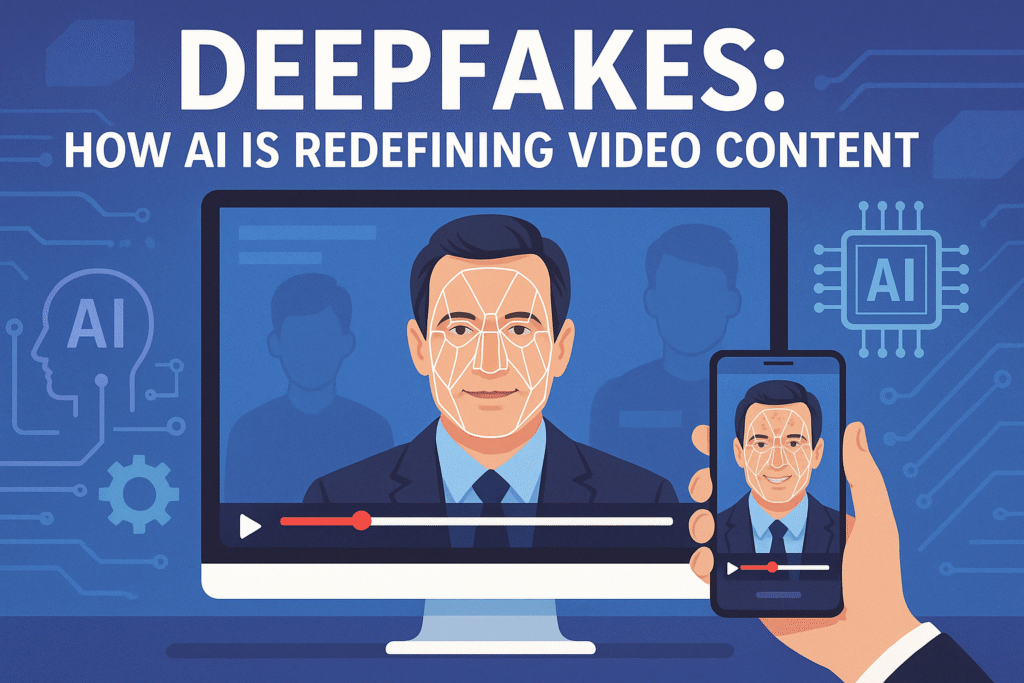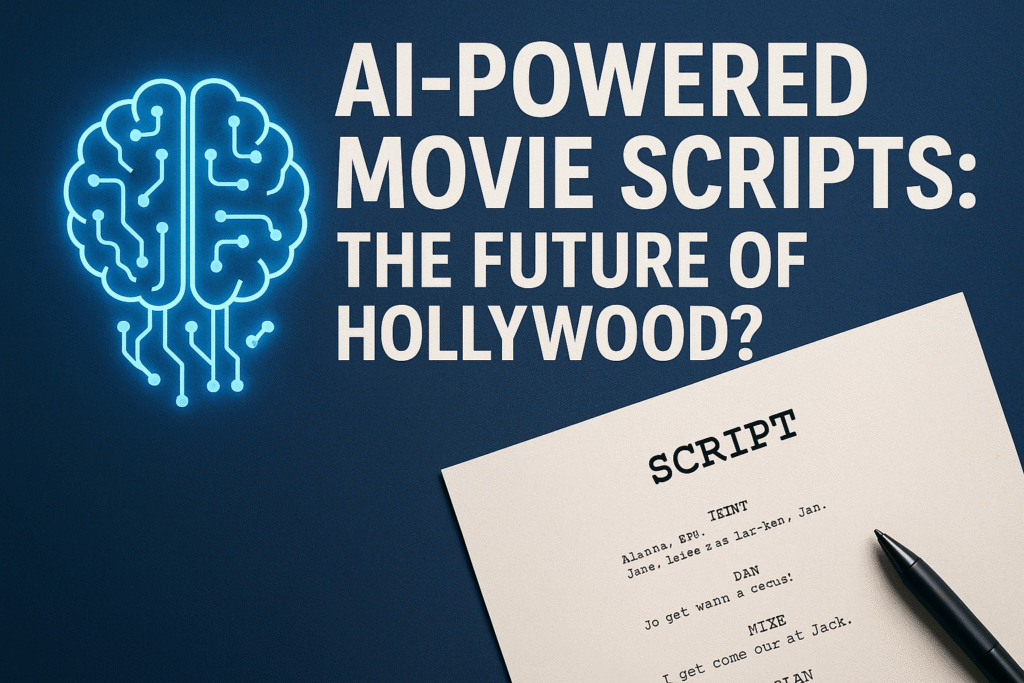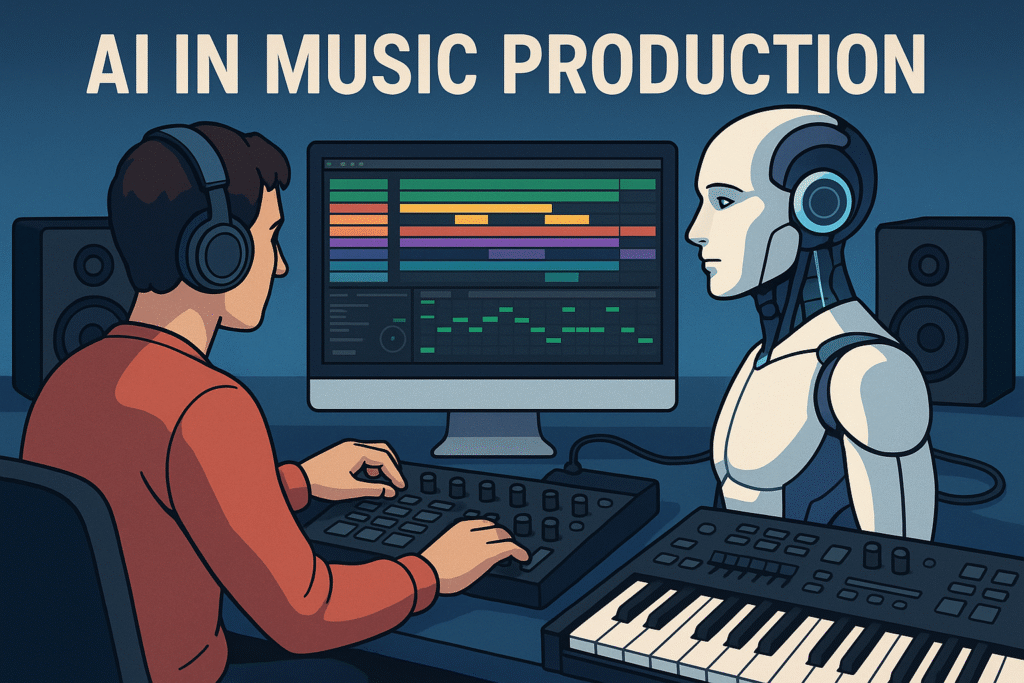Deepfakes: How AI Is Redefining Video Content – The Future of Digital Media
Discover how deepfake technology is transforming the future of video content with AI. Learn its uses, benefits, and challenges in this comprehensive guide on AiBlogQuest.com.
🎬 Introduction: The Rise of Deepfakes
In the world of digital media, deepfakes are revolutionizing the way video content is created and consumed. Powered by AI, deepfakes allow for hyper-realistic video manipulation, where faces, voices, and actions are altered with astonishing precision. This technology is increasingly being used in entertainment, advertising, and even political messaging.
At AiBlogQuest.com, we explore how deepfakes are shaping the future of video content, the ethical implications of AI-driven video manipulation, and what this means for the future of digital media.
🧠 What Are Deepfakes?
Deepfakes refer to AI-generated or manipulated videos where the likeness of a person is replaced or altered. Using Generative Adversarial Networks (GANs), AI can analyze massive amounts of data to produce videos that are indistinguishable from reality. Deepfake tools can swap faces, modify facial expressions, and even replicate voices.
The rise of deepfakes has sparked both excitement for creative applications and concern for the potential misuse of the technology.
🎥 How Deepfakes Are Shaping Video Content Creation
Deepfake technology is making waves across various industries by transforming the creation and production of video content. Here’s how:
1. 📝 Enhanced Filmmaking and Special Effects
Deepfakes are being used in the film industry to enhance storytelling and visual effects. AI allows filmmakers to bring back actors from the past, digitally recreate historical figures, or de-age characters without relying on expensive CGI. This technology is helping filmmakers achieve stunning realism and imagination.
2. 🗣️ Personalized Advertising
With the help of deepfakes, brands can create personalized advertisements where well-known personalities or celebrities deliver messages specifically tailored to an individual viewer. This level of personalization can boost engagement and increase conversion rates.
3. 🌐 Content Localization
AI-powered deepfakes are also making it easier to localize content. By using deepfake technology, creators can swap the faces and voices of actors in different languages, allowing films or videos to appeal to a global audience without needing to shoot entirely new versions.
4. 📺 Political Campaigns and Misinformation
While deepfakes offer creative benefits, they also raise concerns about misinformation and fake news. The ability to produce convincing fake videos has serious consequences, particularly in political campaigns, where manipulated content can influence voters or damage reputations.
🎯 Benefits of Deepfakes in Video Content
✅ Cost-effective production: Deepfakes reduce the need for reshoots or expensive CGI, making video production more affordable.
✅ Time-saving: AI can generate content quickly, enabling faster turnaround times for filmmakers and advertisers.
✅ Creative freedom: Deepfakes unlock new creative possibilities, from historical recreations to digitally altered performances.
✅ Wider accessibility: With deepfake tools becoming more accessible, filmmakers of all sizes—especially indie creators—can produce high-quality content at a fraction of the cost.
⚠️ Challenges and Concerns with Deepfakes
While deepfake technology offers significant advantages, it also brings ethical and societal challenges:
❌ Misinformation: Deepfakes can be weaponized to spread false information or create fake news, causing harm to individuals or society.
❌ Privacy issues: The ability to manipulate someone’s likeness without their consent poses a risk to personal privacy and security.
❌ Legal ramifications: Questions around ownership and the legality of using someone’s likeness without permission are yet to be fully addressed.
These concerns have led to growing calls for regulation and ethical guidelines surrounding the use of deepfake technology.
🔗 Useful Links
🌐 Resources
❓ FAQ – Deepfakes and AI Video Content
Q1: What is a deepfake?
A deepfake is an AI-generated or manipulated video in which the likeness of a person is altered or replaced. Deepfakes use advanced machine learning algorithms to create hyper-realistic video content.
Q2: How are deepfakes being used in Hollywood?
In Hollywood, deepfakes are used for everything from visual effects and de-aging characters to bringing back deceased actors for digital performances. They allow filmmakers to push the boundaries of creativity while reducing production costs.
Q3: Can deepfakes be detected?
Yes, while deepfakes are becoming increasingly convincing, there are AI tools and technologies being developed to detect manipulated videos. These tools analyze inconsistencies in the video or audio that reveal the content as fake.
🎞️ Final Thoughts
Deepfake technology is reshaping the way video content is created, offering new possibilities for filmmakers and advertisers. However, it also poses significant ethical and legal challenges that must be addressed as the technology becomes more widespread. As AI continues to advance, it’s clear that deepfakes will play an important role in the future of digital media.
Stay ahead of the curve in digital media innovation with AiBlogQuest.com, where artificial intelligence meets creativity.
🏷️ Tags:
Deepfakes, AI Technology, Video Content, Digital Media, AI in Film, Generative Adversarial Networks, AI Video Creation, Misinformation, Deepfake Detection



